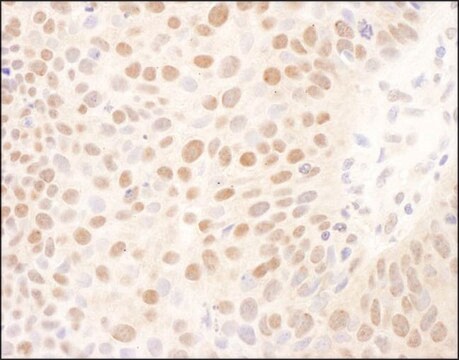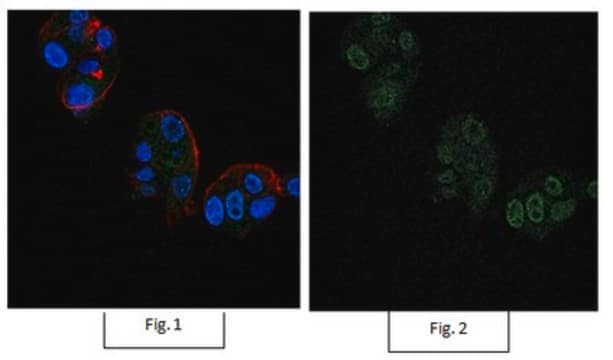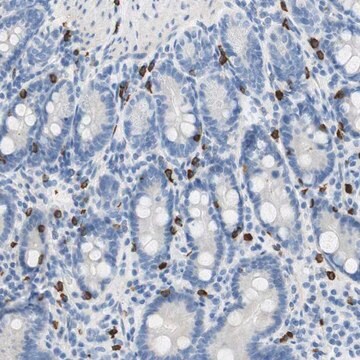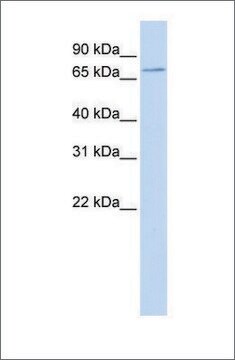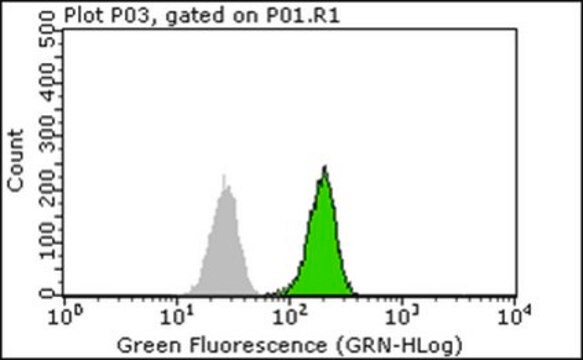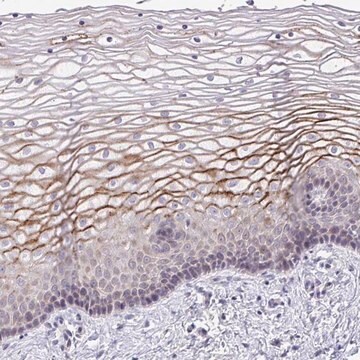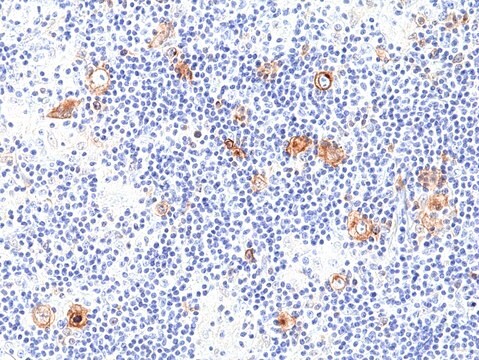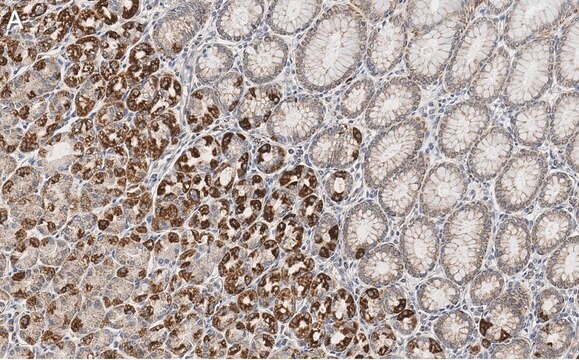SAB4200034
Anti-BMI1 (C-terminal) antibody produced in rabbit
~1.0 mg/mL, affinity isolated antibody, buffered aqueous glycerol solution
Sinónimos:
Anti-B lymphoma Mo-MLV insertion region 1 homolog, Anti-PCGF4, Anti-Polycomb group RING finger protein 4, Anti-RNF51, Anti-Ring finger protein 51
About This Item
Productos recomendados
origen biológico
rabbit
conjugado
unconjugated
forma del anticuerpo
affinity isolated antibody
tipo de anticuerpo
primary antibodies
clon
polyclonal
Formulario
buffered aqueous glycerol solution
mol peso
antigen ~37 kDa
reactividad de especies
human
envase
antibody small pack of 25 μL
concentración
~1.0 mg/mL
técnicas
immunoprecipitation (IP): 2.5-5 μg using lysates of HEK-293T cells over expressing human BMI1
indirect immunofluorescence: 1-2 μg/mL using paraformaldehyde fixed HEK-293T cells over expressing human BMI1
western blot: 2-4 μg/mL using lysates of HEK-293T cells over expressing human BMI1
Nº de acceso UniProt
Condiciones de envío
dry ice
temp. de almacenamiento
−20°C
modificación del objetivo postraduccional
unmodified
Información sobre el gen
human ... BMI1(648)
Descripción general
Aplicación
- western blotting
- immunoprecipitation
- immunofluorescence
Acciones bioquímicas o fisiológicas
Forma física
Cláusula de descargo de responsabilidad
¿No encuentra el producto adecuado?
Pruebe nuestro Herramienta de selección de productos.
Código de clase de almacenamiento
10 - Combustible liquids
Punto de inflamabilidad (°F)
Not applicable
Punto de inflamabilidad (°C)
Not applicable
Elija entre una de las versiones más recientes:
Certificados de análisis (COA)
¿No ve la versión correcta?
Si necesita una versión concreta, puede buscar un certificado específico por el número de lote.
¿Ya tiene este producto?
Encuentre la documentación para los productos que ha comprado recientemente en la Biblioteca de documentos.
Nuestro equipo de científicos tiene experiencia en todas las áreas de investigación: Ciencias de la vida, Ciencia de los materiales, Síntesis química, Cromatografía, Analítica y muchas otras.
Póngase en contacto con el Servicio técnico